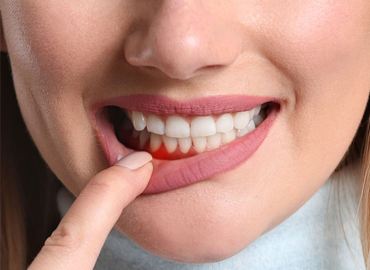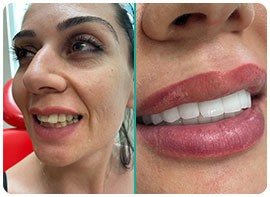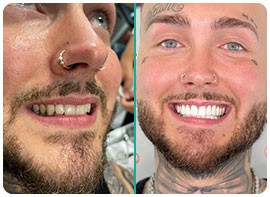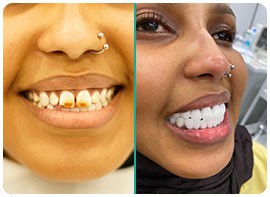What is Gum Disease?
It is an inflammation of the gums that surround and support the tooth. Bacteria in the sticky and colorless plaque that often forms on the teeth are the main causes of gum disease.
The hard and soft tissues surrounding your teeth are very important for your oral and dental health. A discomfort that will occur in this area will also affect your body health in general.
The main subject of periodontology science is problems such as inflammation of the gums, bone resorption. It is very important to treat gum disease by applying the most appropriate treatment method to save the tooth, eliminate inflammation.
What are the Symptoms of Gum Diseases?
1. Bleeding in the gums during tooth brushing.
2. Red, swollen and sensitive gums.
3. Bad breath.
4. Withdrawal in the gums.
5. Gums that can be easily separated from the teeth.
6. Inflammatory discharge between the teeth and Decongestants.
7. December Decembers are teeth that are swinging or gradually moving away from each other (the formation of gaps between the teeth or an increase in existing gaps).
8. Changes in the sensitivity between the upper and lower teeth during biting. Dec.
9. It is the change in the fit of the existing prosthesis.
What are the Causes of Gum Disease?
The most important reason for the occurrence of gum diseases is oral care. Most often, improvement is achieved by correcting oral care. Sometimes the causative causes of gum disease are hereditary causes. Most gum diseases start at an early age and progress quite quickly. If it is not controlled, the loss of all teeth may even occur at the age of 30-40.
One of the most important enemies of gum is the harmful substances found in cigarettes. Smoking hides gum bleeding, making it difficult to notice gum discomfort. In addition to these reasons, other important causes of dental disease are as follows.
Medications That Cause Gum Growth
Some drugs used in epilepsy disease cause growth in the gums, thus facilitating the accumulation of food.
Pregnancy: Hormonal changes and brushing difficulties often lead to gum disorders and tooth loss.
Puberty: It is a bad period in terms of gum disorders due to temporary hormonal changes and problems such as the habit of brushing not sitting down. In some children, nasal flesh and tonsil problems also cause gum diseases and dental disorders.
Orthodontic Problems: Dental complications cause gum folds to form and brushing difficulties. If the jaw curves are corrected with treatment, gum problems are also significantly reduced.
Traumas: Habits that create pressure on the teeth(squeezing teeth, etc.) gum retractions may occur as a result of improper brushing. To prevent withdrawals, it is necessary to use soft toothbrushes and brush with the appropriate technique.
What are the Treatment Methods for Gum Disease?
Periodontologists apply surgical and non-surgical treatment methods such as tooth surface cleaning, root surface smoothing, curettage procedures, occlusal adjustments.
1. Surgical treatment of gum retractions,
2. Surgical treatment of gum growths,
3. Surgical applications to treat tissue losses that develop due to gum diseases,
4. Bone grafts, membrane applications, soft tissue grafts,
5. Cleaning of plaque and dental calculi that cause gum disease
6. Correction of disfigured gums due to genetic disease or trauma.
7. Informing the patient about the provision of oral hygiene.
8. Treatment of gum infections by non-surgical methods.
9. Surgical treatment of gingivitis under local anesthesia by surgical method.
Early diagnosis is very important in periodontology.








